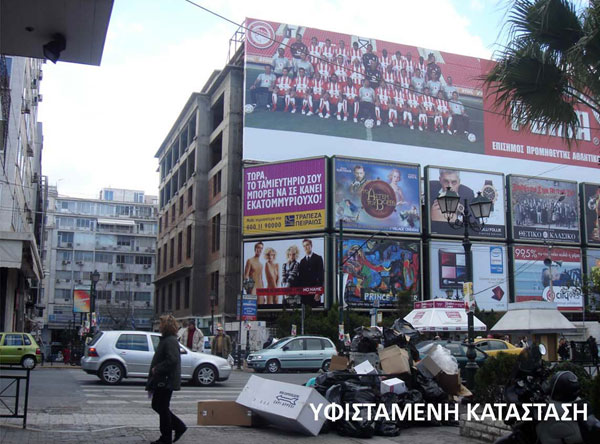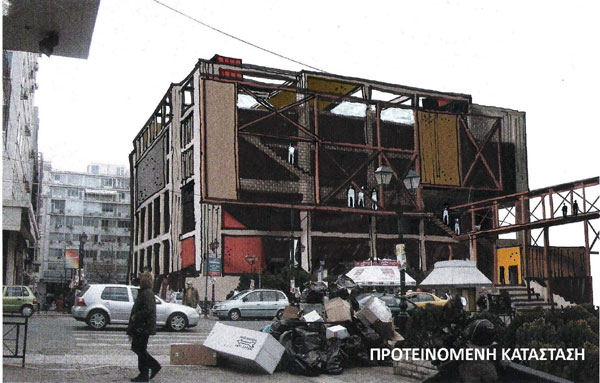STUDENTS PROJECTS
2010
02 June, 2010
Reform of central area in Piraeus - a revival system of the city -
Building over the already built. A network of interventions aiming at repairing and restructuring the Greek urban landscape.
Department of Architecture Xanthi (Duth)
Student: John Angelakos
Supervising professors: Panos Kokkoris, Theoni Xanthi, George Papagianopoulos
Defence date: 10/04/09
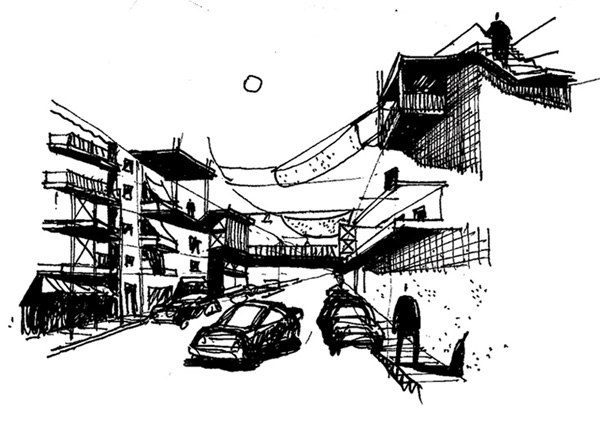

Subject of this dissertation is the study of an architectural recreation to an extensive network of places in the centre of Piraeus, in particular the region of the harbor surrounded by the streets Kolokotroni, Notara, Filonos, Iroon Politechniou, Korai square.
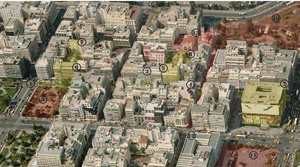
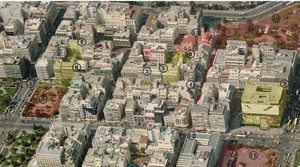
Yellow color:intervention areas. Red color: Existing prosperous areas with which the intervention intends to be united and which it intends to absorb. (streets, pavements, squares, buildings).
Core of this work's speculation is the everyday urban environment of the modern Greek city - streets, pavements, squares, buildings - as the main factor which shapes the daily experience and like within the city. Thought around the matter have lead my interest to stray from studying one individual building - empty plot - and turning over and in the already built, the existing buildings and surrounding space, pavements, block of flats , the remaining city space which we, more or less , regard as closed or complete. From this point of view the subject, trying to built over the already built, became a research of ways to repair and reconstruct the existing structured environment so as, in a realistic, subtle, economical, carefully planned and even repetitious way to improve the living conditions in the city, to solve crucial problems and also to prove that the city is not a closed environment but a still 'open' field, over which we can rebuilt a more familiar place.
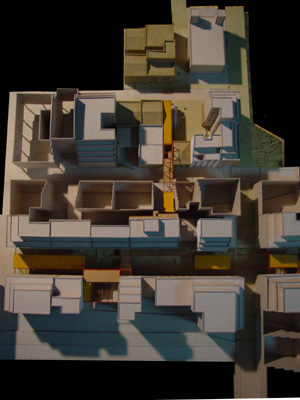
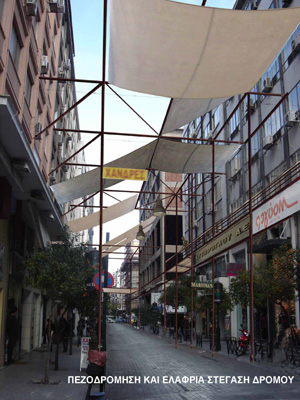
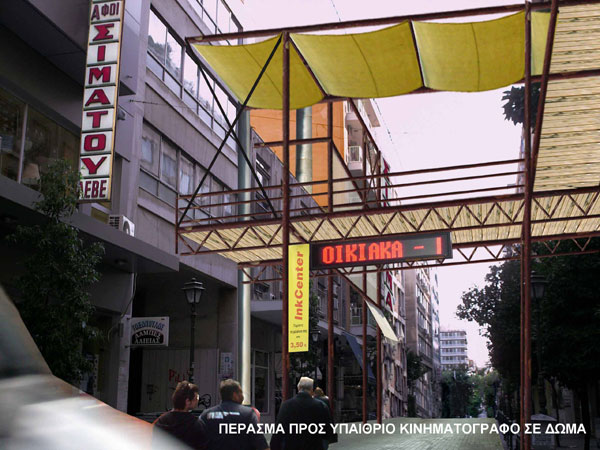
To achieve this, the course of this work focused on the following main points:
a) Diagnosis and study of the Greek city's perennial problems
b) Detection of underlying potentials within the existing building network (unbuilt plots, building's terraces, passageways, existing exterior building shells), as possible solutions that the city itself offers to its problems and which make up a microcosm of sizes, materials, relations, particularly useful, fragmentary however.
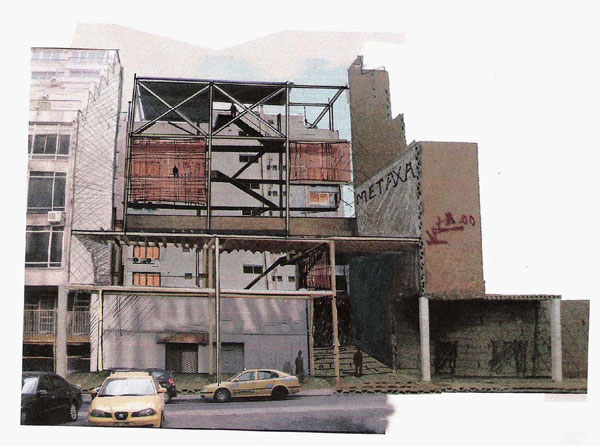
c) Spreading of a network of spaces which takes form with various metal structures that go through the structure of the city as a parasite rebuilding over the existing environment, arming, strengthening and making the most of the previously mentioned above underlying potentials, in a complementary relationship. Filling everytime appropriately the 'container' of the urban relief in different intensity, the structures:
-Suggest pedestrianizations and lightweight roofings of streets
-Spread on shells of existing buildings, contributing to the cooperation of the ground floor, the above floors and the building's terraces, thus making the most of spaces that were until recently abandoned.
-Free and exploit new outdoor spaces in strained points, while they give them life with new uses (open air cinemas, cafes - bars).
-Offer useful alternative routes completing the unfinished existing network of pavements, galleries and passageways.
-Try to coordinate the different and various forms and relations of the urban scenery in a unified composition, in order to give once more to the centre of the city cohesion and unity by functioning as a kind of a middle between complete uniformity and the complete lack of it, in an attempt to view the city as a big unified building.
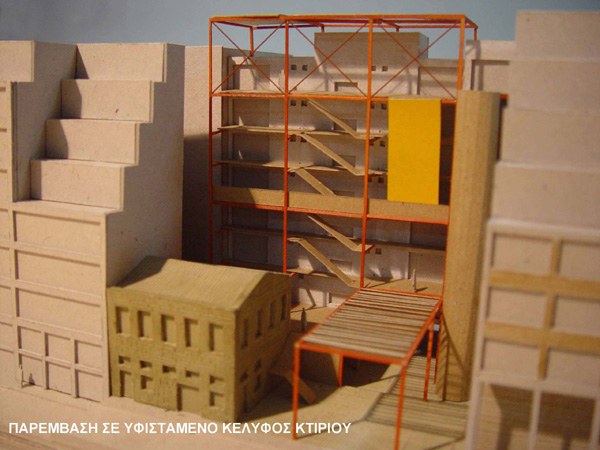
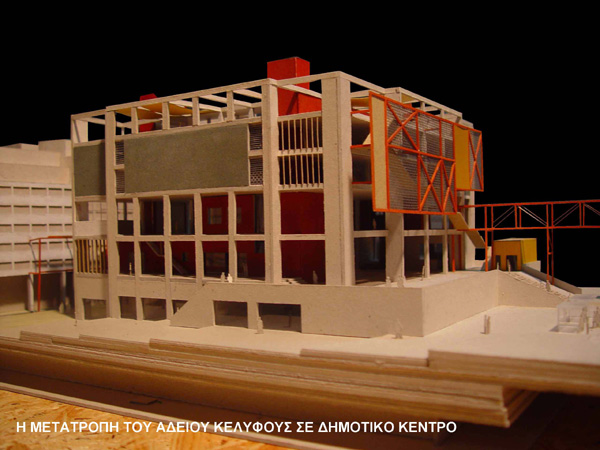
d) Finally, as the parasite spreads filling the urban relief, it penetrates in the inside of an existing 'building site' in front of Korai square. Built by the municipality of Piraeus in 1970 as a town hall, its construction stopped (for legal reasons) until the completion of the bearing structure, leaving it abandoned. The study uses it and redesigns it as a municipal centre and a Piraeus urban planning evolution museum, making it the head and womb that supplies for the whole network.
